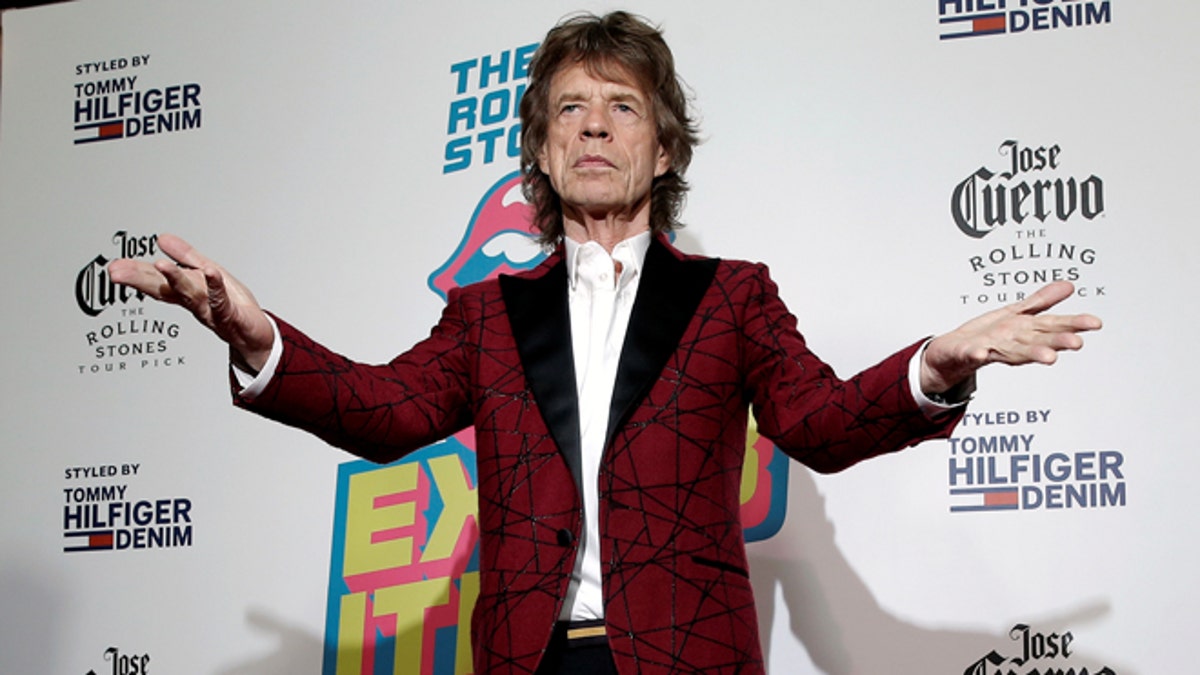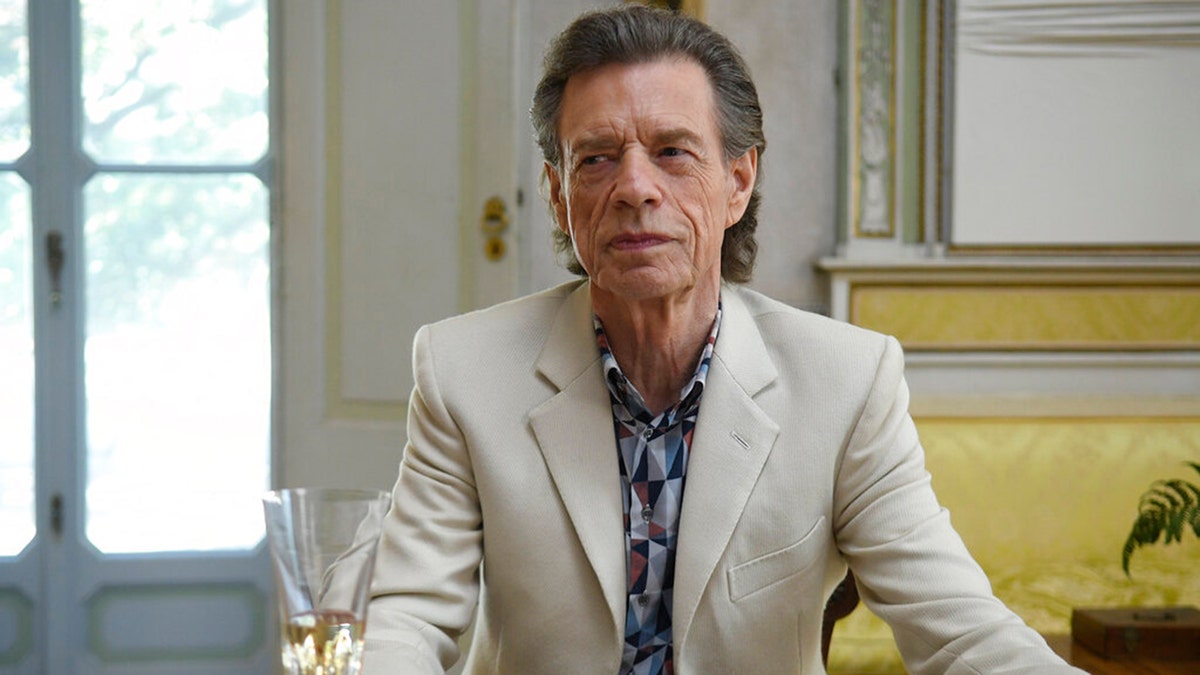Fox News Flash top entertainment headlines for March 5
Fox News Flash top entertainment and celebrity headlines are here. Check out what's clicking today in entertainment.
Mick Jagger will return to acting for the first time in almost 20 years in the new film, "The Burnt Orange Heresy."
In the film, which Sony Pictures Classics will release Friday, Jagger co-stars alongside Claes Bang and Elizabeth Debicki as a devilish art collector who cunningly convinces an art journalist (Bang) to use a rare interview with a reclusive artist (Donald Sutherland) as an opportunity to steal one of his paintings. It’s Jagger’s first film since 2001’s “The Man From Elysian Fields.” And, he says, it might be his last.
“I wish I had done a lot more acting. I’ve just done bits and pieces here and there whenever I’ve been able to,” Jagger said in an interview by phone. Then he chuckles. “You know, I have another job. I have several other jobs, really.”
MICK JAGGER RETURNS TO TOUR FOLLOWING HEART SURGERY
When the 76-year-old hasn’t been performing with the Rolling Stones, Jagger has carved out a peripatetic but adventurous career in movies. He’s favored more experimental filmmakers, working with Jean-Luc Godard, Nicolas Roeg and Werner Herzog. Acting a little less than David Bowie but more than Bob Dylan, Jagger’s film career has been consistently intrepid. He’s a very good actor, even if his big-screen performances will always be dwarfed by the gyrating spectacle of his kinetic stage persona.
“I always liked the idea of it,” Jagger, speaking by phone from France, says of acting. “I enjoy the change of pace and the change of focus of your performance. When I’m performing these days, it’s mostly in very large places in front of lots of people, whereas when you’re on a small set, you’re performing much more subtly and not such elaborate gestures. You have to really tone it down.”

Mick Jagger is getting back into acting. (AP Photo/Michel Euler, File)
Sometimes, fate (and tour scheduling) has intervened. Jagger’s performance in Herzog’s famously delirious “Fitzcarraldo” (1982) was cut because the original lead, Jason Robards, got sick. When shooting restarted in the Peruvian jungle, Jagger had a conflicting Stones tour. His part was cut and Klaus Kinski took over for Robards. Herzog has called Jagger’s departure “one of the biggest losses I’ve ever experienced as a director.” (Bits of Jagger’s performance be seen in documentaries like “Burden of Dreams” and “My Best Friend.”)
“It was a pity about that. That was a shame,” says Jagger. “So Klaus Kinski did the job on that and did it better than I. Nevertheless, it was an experience.”
But the timing and the script lined up for “The Burnt Orange Heresy.” It’s directed by Italian filmmaker Giuseppe Capotondi, whose twisty 2009 debut film “The Double Hour” proved his talent for conjuring a noirish atmosphere of intrigue and mystery. “The Burnt Orange Heresy,” based on Charles B. Willeford’s 1971 novel, is an elegant, stylish kind of film seldom made anymore, with glamorous actors in a glamorous setting (Italy’s Lake Como).
When Capotondi first met Jagger in London to discuss the part, he was struck by the rock star's humility. “He said, ‘Look, I haven’t done this in 20 years. I might be rusty,’” recalled Capotondi.
MICK JAGGER ENJOYS DAY OUT WITH DAUGHTERS ONE MONTH AFTER HEART SURGERY
Jagger found ways to shape the character, giving him slicked-backed hair and a slightly menacing Chelsea accent from the 1960s. In the film, Jagger’s art dealer presents Bang’s writer with a kind of Faustian bargain, and things get darker from there. Capotondi considers the character a version of the devil -- an apropos role for the writer of “Sympathy for the Devil.”

Mick Jagger and Carly Simon recorded the song decades ago but it was lost. (Reuters)
“To play the devil is something that can appeal to most actors. It’s such a serpentine character,” says Capotondi. “Given the Rolling Stones discography, I think it’s quite fitting.”
Jagger is less sure about the connections between “The Burnt Orange Heresy” and the band’s classic 1968 single, which was partially inspired by Mikhail Bulgakov’s beloved Russian novel about Beelzebub in 1930s Moscow, “The Master and Margarita,” and a Baudelaire poem. But Jagger’s art dealer is, for sure, “a man of wealth and taste,” and one that playfully trades on Jagger’s demonic charisma.
“It was in my grasp to do this character. I thought it would be fun to do,” says Jagger. “He basically charms and threatens him to do what he wants. It’s not a lot of screen time but he’s the one who sets off the action.”
One of Jagger’s first films remains one of his most celebrated: Roeg’s hallucinatory 1970 film “Performance,” in which he played a drug-addled, gender-bending rock star. Critically slammed upon release, it’s steadily grown a cult following with Jagger’s performance often ranking among the best by a musician in a film.
He played the title character in Tony Richardson’s “Ned Kelly,” the “bonejacker” in Victor Vacendak’s cyberpunk “Freejack (1992) and a drag queen in “Bent.” He was an executive producer on the short-lived HBO series “Vinyl,” and produced the James Brown biopic “Get on Up.” And then there are the many documentaries that have indelibly captured the Stones, including “Gimme Shelter,” about the tragic 1969 Altamont concert; Martin Scorsese’s “Shine a Light,” Brett Morgan’s “Crossfire Hurricane” and Godard’s intimate but chaotic doc, “Sympathy for the Devil.”
MICK JAGGER LIVELY AS EVER AT FIRST ROLLING STONES SHOW FOLLOWING HEART SURGERY
“I used to say to Jean-Luc, ‘What’s the rest of the movie like? Can you explain to me what the rest of the movie is like?’ And he really couldn’t. I don’t think he really knew. It was like: What a genius,” says Jagger.

This image released by Sony Pictures Classics shows Mick Jagger in a scene from the film, "The Burnt Orange Heresy." Jagger plays a devilish art collector who cunningly convinces an art journalist to use a rare interview with a reclusive artist as an opportunity to steal one of his paintings. It’s Jagger’s first film since 2001’s “The Man From Elysian Fields.” (Jose Haro/Sony Pictures Classics via AP)
“When I was really young, I used to watch a lot of foreign cinema,” he adds. “I watched early Roman Polanski movies when I was a student and we used to think ourselves great intellectuals and just watch foreign films and New Wave. We were very into that.”
Jagger, who last year had heart surgery, is currently prepping the North American leg of the Rolling Stones’ “No Filter” tour this summer. His day job, again, calls.
Jagger, of course, is certain to remain a regular soundtrack to cinema. The Stones' remain an irresistible needle drop to countless filmmakers. (Most recently, “Sweet Virginia" lent a luminous lilt to the finale of “Knives Out.") But Jagger acknowledges ”The Burnt Orange Heresy" could be his big-screen swan song.
CLICK HERE TO GET THE FOX NEWS APP
"If I don’t get offered another decent role, it might be," Jagger says. Then he laughs. “It’s not planned. If someone offered me something to do in the autumn, I'm sure I'd do it if it was a good part."
The Associated Press contributed to this report.






